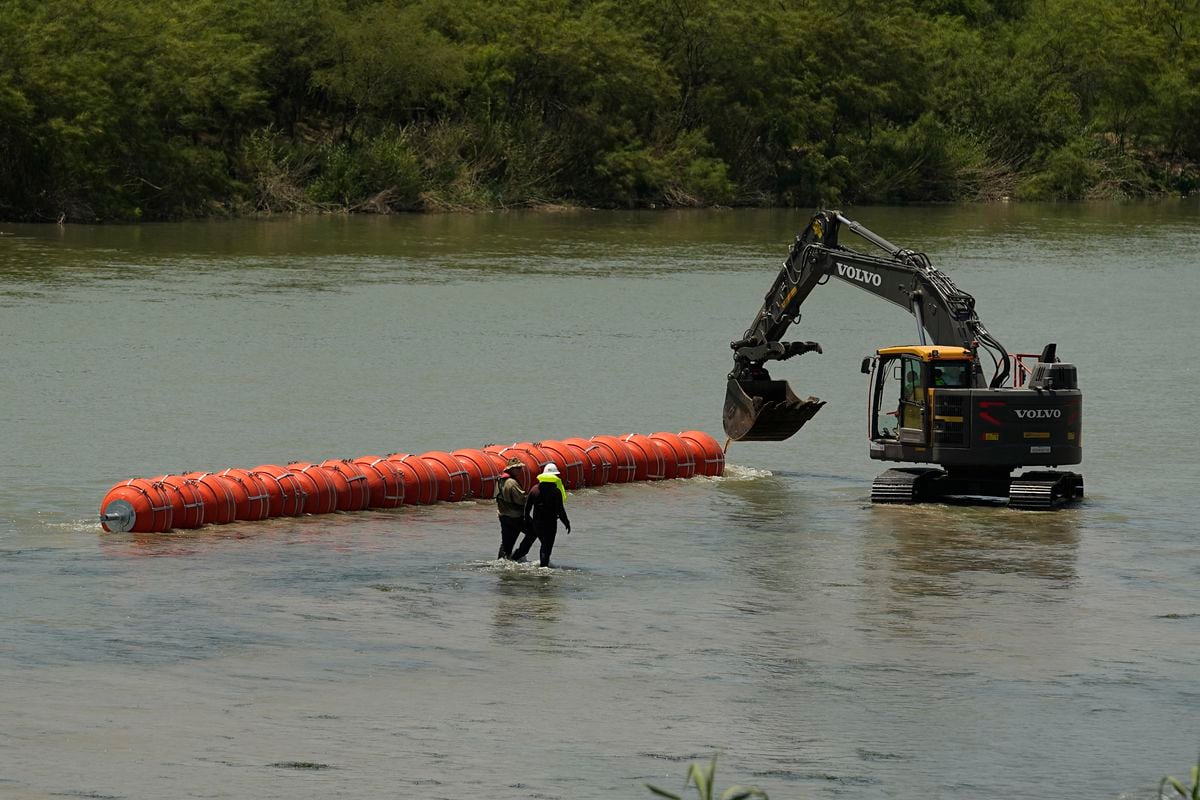The Mexican government sent a diplomatic letter to the United States this Friday expressing concern over the floating wall and barbed wire fences that Texas erected last year along the Rio Grande and its environs. To prevent migrants from crossing the border, Texan officials installed floating barricades and barriers along the large river that separates the cities of Eagle Pass (Texas) and Pietras Negras (Coahuila). The executive, led by Andrés Manuel López Obrador, expressed concern about the “obstructive and disorienting effects” the fence and installed barrels could have.
“[Estas instalaciones] can induce [efectos] The natural flow and channels of the Rio Grande are worsened by the drag on the fence, especially if it is dragged down by an avenue,” the Mexican government said in the statement. The Texas administration, led by Republican Greg Abbott, began moving large orange floats to the site last week and deployed them in the river on Wednesday. “[La extensión de las boyas] “This contravenes Article 17 of the International Water Treaty of 1944, which establishes that ‘the use of international river basins for the discharge of flood waters or other surplus waters shall be free,'” López Obrador’s government gathered in its written document.
But this floating border is one of the transitions between Texas and Coahuila. Last year, the Abbott administration erected barricades on the international bridge connecting the two cities; They also erected barbed wire fences on the banks of the river. The Mexican government has also addressed the sanctions, and says it has asked the United States to remove the barrels and fences as of June 26. “[El Gobierno pide retirar las barreras instaladas] “Due to the effects of the obstruction and diversion of the flow towards Mexican territory”, they exposed, and they ask that the area should not be considered again to place this type of element in the future.
López Obrador’s executive concluded in his letter that any work “including the removal of islands and the bed of the Rio Grande” is authorized by the International Boundary and Water Commission between the two countries.
According to data from the United Nations International Organization for Migration (IOM), last year Mexico stood out as a transit country, reaching record numbers as the origin and destination of migration processes. As of 2020, the country has become the second country in the world (after India) to see its population march beyond its borders; The number of Mexican immigrants has declined from 12.42 million in 2010 to 11.19 million in 2020—97% of the U.S. Migration from Mexico to the United States has been the subject of criticism by officials from its northern neighbor for years. In January, during a trilateral summit with Canada, the two executives pledged to tackle the problem. A month later, Mexico opposed the program’s relaunch of U.S. immigration policy. Stay in MexicoThe move would allow non-Mexicans to be deported while they await resolution by U.S. officials.
Subscribe here want Newsletter Get all the important information about current affairs in this country from EL PAÍS México

“Music ninja. Analyst. Typical coffee lover. Travel evangelist. Proud explorer.”

:quality(85)/cloudfront-us-east-1.images.arcpublishing.com/infobae/TEQF6EONZRFGLLLDIDD4L2O4EE.jpg)

:quality(75)/cloudfront-us-east-1.images.arcpublishing.com/elcomercio/XU32LRAEZFDDPNVHLFU3CKVBYY.jpg)



More Stories
Earthquake in the US today, Wednesday, May 29 – Earthquake’s exact time, magnitude and location via USGS | USGS | composition
President Arrivalo is left with no alternatives to dismissing the Attorney General
Passenger dies after jumping off world’s largest cruise ship in Florida